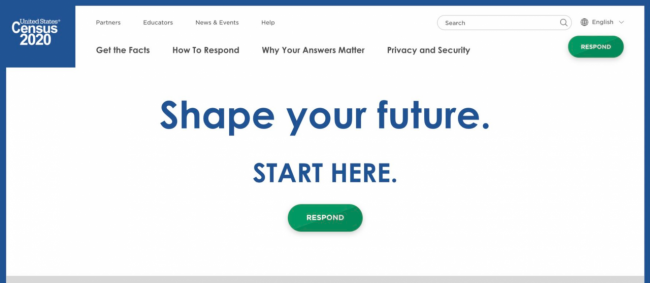Making It Count: Digital Transformation in the Face of a Crisis
Published 06-02-20
Submitted by Adobe

Every ten years, the Federal Government tackles a monumental challenge: the U.S. Census. Dating back to 1790, the Census’ goal is to count the entire population to help determine how billions of dollars in federal funding will flow into states and communities. This includes, but is not limited to, the forecasting and planning for schools, hospitals, roads, emergency services.
Ten years ago, while a digital campaign that leaned into advertising kicked off, the majority of responses were still collected by mail. To make up for the 26% of the population who did not respond, 634,000 census takers then walked door to door to count households that failed to respond, a massive operation that took excess manpower and money.
In trying to reduce barriers to participation, the U.S. Census has spent the past decade modernizing its operation. Then, the COVID-19 pandemic hit the U.S. and like many organizations, the Census Bureau had to adapt.
The first digital decennial
The strategy for 2020 was always focused on digital adoption and making it easy for people to self-respond with the first online census. Not only would this give people the ability to complete the questionnaire anywhere and anytime. It would also save the government significant time and labor. In its first year, more than half of U.S. households have already responded online. The Census Bureau could save at least $55 million for each 1% increase in digital census responses, compared with paper-based survey responses and door-to door recording.
COVID-19 turned the Census’ digital strategy into a necessity, with millions across the country ordered to shelter in place, and door-to-door counts put on hold.
Stephen Buckner, the Assistant Director of Communications at the Census Bureau, believes that the current COVID-19 pandemic has shined light on the important role digital technology plays in our everyday personal and work-related lives.
“No one anticipated a scenario quite like COVID-19, but we purposely planned the 2020 Census to be flexible and resilient,” Buckner said. “But having the ability to get people to respond online has really helped insulate us more than we could have possibly hoped.”
The Bureau has a goal of getting 180 million people (55% of the population) to respond online this year—and early results are already outperforming expectations. Overall, more than 56% of U.S. households have responded.
Greater intelligence with Adobe
While seemingly every brand relies on data to inform decision-making, the Census Bureau takes on the latest data-gathering exercise each decade. Separate from a portal to filling out the census, census.gov is also leveraged by other government bodies, businesses, schools, policy makers and many others to obtain important data.
In partnership with Adobe, the Census Bureau has accelerated its modern, data-driven, and customer service-focused goals, by receiving stronger analysis about who is coming to their website, which areas of the site are most trafficked, and delivering personalized content in real-time.
The Bureau started with a research-based approach, implementing Adobe Analytics to define who its web visitors were, where they were coming from, and using that as a roadmap to redesign and transform census.gov into an innovative website that allows people to find information much more easily. The Bureau also selected Adobe Experience Manager as a Managed Service to serve as the backbone for publishing its high volume of content and information quickly to census.gov. The outreach campaign is available in 13 different languages, and the website offers personalized content and landing pages in 59 languages. The site is also mobile optimized; today more than 35% of the Census Bureau’s traffic comes from mobile.
Using Adobe Target, to personalize experiences and increase online participation in its decennial count through AB testing, has given the Bureau a better understanding of these various personas and the type of information they are looking for.
We use the real-time clickthroughs and other metrics to help us find out whether or not an ad or other product is reaching the right audience,” Buckner says. “And then does it actually convert into a survey response? The ability to monitor that in real-time has been a real game-changer.

Adobe
Adobe
Adobe is changing the world through digital experiences. For more information, visit www.adobe.com.
More from Adobe

